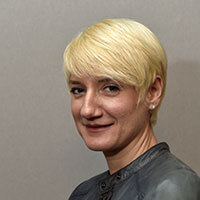Jean-Marc Wiederrecht: Although watchmakers aren’t artists, they do attach particular importance to the beauty of their movements. They put as much care into the outside of the watch as the inside, which they embellish with engraving, polishing and chasing, all the more so when these are exceptional pieces. At Agenhor, we carry on this tradition and make the invisible as elegant as the visible to create a coherent whole. For fun, but also for pleasure, we give them forms that tell the same story as the animation on the dial. Adding a touch of humour to the movement’s connecting parts is our way of not taking ourselves too seriously, and introducing a special touch to a rigorous, technical profession that leaves little room for fantasy.
A watch movement is an object of great precision. All the parts – the hammers, cams, teeth, feelers – are designed to fit together and contribute to the proper functioning of the watch. Approximation is even more taboo given that each part is subjected to significant constraints, such as gravity. Hence why the forms we introduce have absolutely no incidence on the mechanism’s reliability or proper functioning.
These little details do indeed serve a useful purpose as a way to quickly identify parts among the hundreds of components in a movement.
It is quite a feat of technique and one that we owe to Mimotech, which has developed an electroplating process that allows the requisite level of precision. Of course, this doesn’t result in any extra cost for our clients.
Van Cleef & Arpels came to us in 2006 for the Maison’s 100th anniversary. They wanted to mark the event with the Quantième des Saisons, whose dial would represent the four seasons through some of the Parisian jeweller’s signature motifs. The term “Poetic Complication” immediately sprang to mind. This collection sealed the beginning of a partnership which has continued, uninterrupted, for eight years. Each SIHH is an opportunity to transpose the poetry of Van Cleef & Arpels into horological mechanics with the launch of a new watch. This year’s creation was Heure d’ici & Heure d’ailleurs.

They are intimately linked to the watch itself. For example, the movement inside Le Pont des Amoureux conceals two lovers, while a fairy secretly lives inside the Lady Arpels Féérie. For Poetic Wish, we cut functional areas into an eagle shape and made a cam in the shape of a key. Both these motifs are inspired by the canton of Geneva coat of arms.
We’re very happy to do this for other companies, but the unique microcosm of Van Cleef & Arpels lends itself particularly well to these decorative forms.
On the contrary. It’s because of this that we can take such liberties!
Jean-Marc Wiederrecht
Jean-Marc Wiederrecht trained at the École d’Horlogerie de Genève. He has been designing and developing movements for watch brands since 1978. After a brief collaboration with Roger Dubuis, he set up Agenhor (Atelier Genevois d’Horlogerie) in 1996. The company currently employs 28 people, including Jean-Marc’s wife Catherine and their two sons, Nicolas (administrative officer) and Laurent (constructor in the design and development studio).















